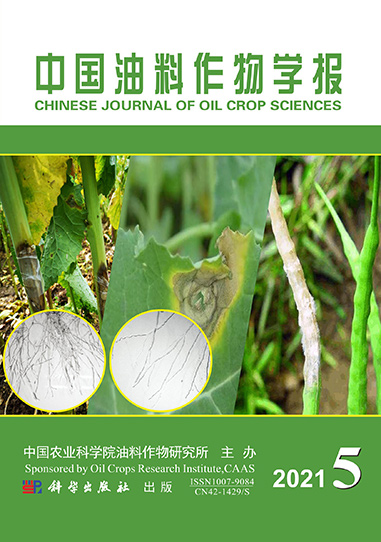JIN Xin-xin, SONG Ya-hui, WANG Jin, CHENG Zeng-shu, LI Yu-rong, CHEN Si-long
In order to study the effects of sowing date and cultivars on agronomic traits, yield and quality of peanut, a field experiment was conducted with six peanut cultivars, containing three common cultivars Jihua9, Jihua10, and Jihua12, three high oleic acid cultivars Jihua11, Jihua13, and Jihua16. Seven sowing dates were set up: 4/25, 5/6, 5/16, 5/26, 6/6, 6/15 and 6/26. The results showed that Jihua10, Jihua12, Jihua13 and Jihua16 had higher main stem height, longer lateral branch and more branches, while Jihua9 and Jihua11 showed lower main stem height, shorter lateral branch length and fewer branches. The average pod yield and seed yield of 6 peanut varieties were 4716.22 kg/hm2, and 3469.52 kg/hm2, respectively. Jihua12 had the highest seeds yield of 3541.99 kg/hm2. Compared with Jihua12, the seeds yield of Jihua9 and Jihua10 decreased by 0.35%-1.91%, and Jihua11, Jihua13 and Jihua16 decreased by 2.11%-5.54%. As the sowing date was delayed, the agronomic traits and yield of peanuts basically followed by the change trend of 5/6 to 5/16 > 4/25 > 5/26 to 6/26. The pods yield and seeds yield for sowing data of 5/6-5/16 were 5547.16 kg/hm2 and 4204.24 kg/hm2, respectively, with the average oleic acid/linoleic acid ratio (O/L) of 12.90. The pod yield and seed yield for the sowing date of 4/25 sowing decreased by 5.16% with high O/L of 14.61. The pod and seed yield on 5/26 sowing decreased by 9.05% with O/L reduction of 35.56%. Later than sowing 5/26, main stem height decreased by 7.40%-22.89%, lateral branch length shortened by 7.07%-24.89%, branch number decreased by 3.74%-9.70%, pods per plant decreased by 4.59%-21.78%, 100-pod weight decreased by 6.59%-27.94%, 100-seed weight decreased by 10.35%-32.33%, pod yield decreased by 17.97%-45.78%, seeds yield decreased by 21.80%-52.50%, O/L decreased by 50.57%-73.30%. Taking agronomic traits, yield indicators and quality into consideration, the optimum sowing date of peanuts for regular cultivation style of open field should be between 5/6 and 5/16 in the central and southern Hebei Province.
